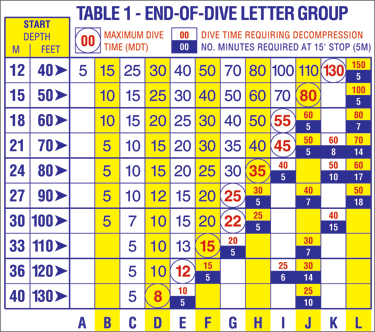Decompression sickness

The air that you
breath when scuba diving is approximately 21
percent oxygen and 79 percent nitrogen just like
the earths atmosphere. As you descend and the
pressure increases, this ratio stays the same
however the amount of particles in one breath
increases as the pressure also increases.
Because the density and pressure are related by
a constant, the term partial pressure is used to
describe how many particles of a substance are
in your body at anytime and at any depth. This
means that the partial pressure of nitrogen goes
up as you descend because as the pressure
increases you inhale more nitrogen atoms with
every breath. This can be dangerous because your
body does not use nitrogen like it uses oxygen
in its cells so it takes longer to get all the
extra nitrogen out of your body. Because it
takes longer to get this nitrogen out of your
body, it is important to ascend slowly so that
you give your body plenty of time to push out
all of the extra nitrogen gas. If you rise too
quickly however and there is too much nitrogen
in your body without the pressure to keep it
compressed. This can cause it to form little air
bubbles inside of your blood and tissues. These
little bubbles can then move around, join with
each other to grow larger or get stopped in
narrow parts of your bloodstreams like joints
cutting off blood flow. Because of this, time at
great depths is limited so that the amount of
nitrogen you take in at high pressure is limited
to the amount that your body can handle. This is
also the reason why you take a 3 minute safety
stop at 15ft so that your body has a little
extra time to push out the nitrogen and prevent
decompression sickness.
Below is the chart
that shows how long you can stay at a depth
before you need to surface or face a high chance
of decompression sickness. Note these times can
be increased by not spending all the time at the
max depth, instead you spend only a few minutes
at the extreme depths then move up to a
shallower depth for the rest of the dive. The
time at depth must still be accounted for
however so do not think you can spend the max
time at each depth before you move up.
